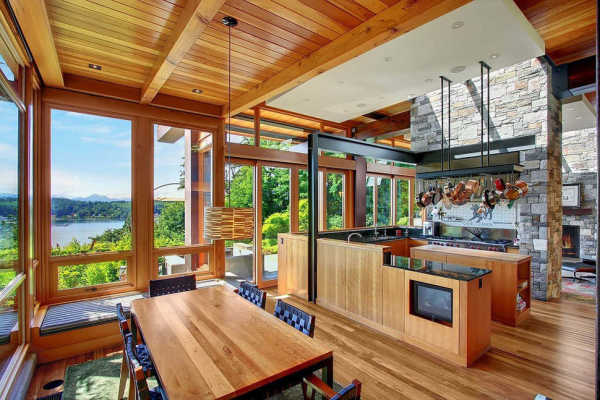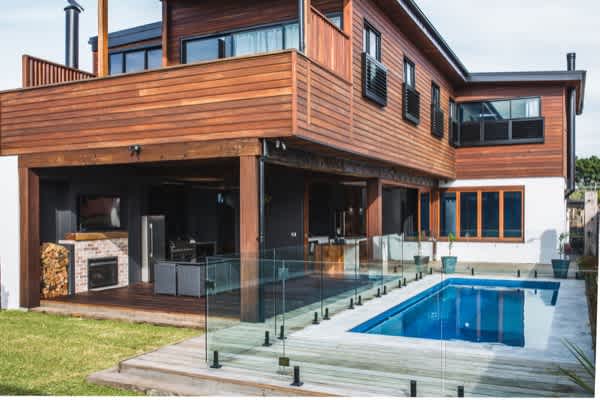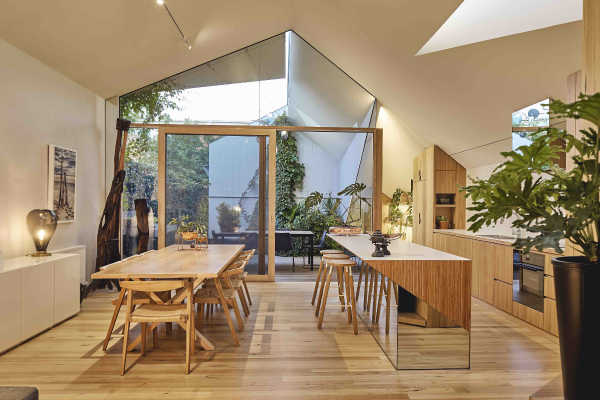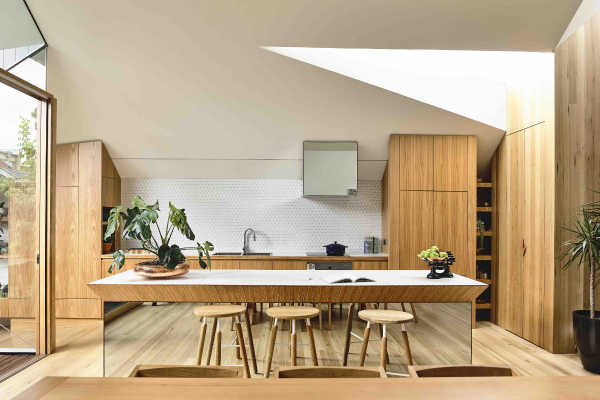How to mix wood tones that team seamlessly
13 May 2021
Nicole Bittar
Spicing up your interior or exterior look depends on taking liberties in the design department.
A monochrome effect adds uniformity, creating a minimalist appearance. But for builders, craftspeople and interior designers with a difference, the myriad tones and hues of wood as a mixed-material base can be blended to perfection.
Balance, theme and harmony are the all-important elements for a stylistic finish when mixing wood tones in the design process. Subtlety can be the key to creating the wow factor when it comes to mix-and-match wood tones. Whether you’re mixing wood tones in the living room, dining room, kitchen, bedroom, even in the bathroom (such as a two-toned wooden bathroom caddy with matching toothbrush cups), decorating with different wood tones is designed to dazzle.
Trust your creative instinct. Pairing dark and light furniture together can create a perfect match if you choose to mix warm and cool wood tones. But combining wood tones that appear effortlessly paired shouldn’t rely on random selection. Just as sustainable timber has become synonymous as the ultimate renewable, providing a superior material choice for eco-conscious practitioners, mixing wood tones in a room takes the eye of an artist, heart and soul of a master craftsperson and mind of an environmentalist.

Tonal combinations to suit any style
Whether your taste leans towards ski chalet chic, spa retreat, cosy log cabin or designer loft, the mix of interior themes that blend wood tones with finesse are endless.
When you imagine recreating these rarefied spaces in your own home, channel a little visual inspiration. Research the looks and styles that work best in a design, budgetary and replication sense. Discover why and how a scrupulous mix of wood tones is a matter of using a base element, such as dark or light grains and shades, and highlighting or juxtaposing your dominant material with contrasting tones. Achieving an inviting style depends on maintaining a theme. Timber supply/hardware stores, design websites and local artisans can assist with advice and/or materials.
You can create different looks and finishes with cost-effective solutions when mixing wood tones, either as in interior or exterior feature. A carefully blended deck, window frames, eaves and shutters add interest and visual appeal to any façade. Similarly, mixing woods in a room can be as easy to achieve as crafting a bookshelf for the study or library with contrasting wood tones. Consider purchasing a dark wood dining table and teaming it with light wood dining chairs, or vice versa. Soften the differences in wood tones with furnishings such as colourful rugs, artworks and indoor plants. Mixing warm and cool wood tones is designed to keep it interesting and add unexpected flourish to any interior or exterior style. You’re limited only by imagination when designing or decorating with different wood tones.

Style setting and ecologically sustainable
The natural beauty, warmth and unique character of timber is not only functional and stylish to behold, but it also offers long-term benefits.
Wood ages beautifully and its intricate grains can be used to great effect in an all-white interior or for balancing stone fixtures and fittings, porcelain floor tiles and plaster walls. Builders might consider mixing a dark wood-based façade with interior wood panelling in a lighter finish. New homes also add feature interest by blending cast-iron window frames with the warmth of sustainable timber.
The life cycle of wood as the ultimate renewable is assured by its organic processes. Essentially, the eco and designer appeal of wood lies in its living, breathing and evolving qualities — and the fact that it is naturally restorative (i.e. wood is grown, harvested, sustainably used and this cycle is repeated and maintained).
The carbon-storing properties of wood also help to combat climate change. That’s because about 50 per cent of the dry weight of wood is carbon, which is absorbed in the growing process and stored for life. In addition, the embodied carbon (i.e. the energy that is used to produce the material and transport it to its place of use) is much lower for wood than other building materials like steel, aluminium and concrete.
You can also minimise your carbon footprint by shopping locally and enlisting suppliers, designers and practitioners who make it their business to maintain the future of wood as the ultimate renewable.
Adopting mix-and-match wood tones is designed to unify practitioners and purchasers in the supply chain. Best of all, choosing wood as your base material, or for home accents and accessories, is beneficial for the environment and livelihood of the sustainable timber industry.


Photos:
Bainbridge Island House, WA
Swadling House, NSW
Design and photography: Wingrove Design
His-and-her-house, Vic
Design: FMD Architects
Photography: Peter Bennetts